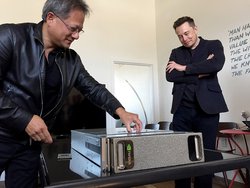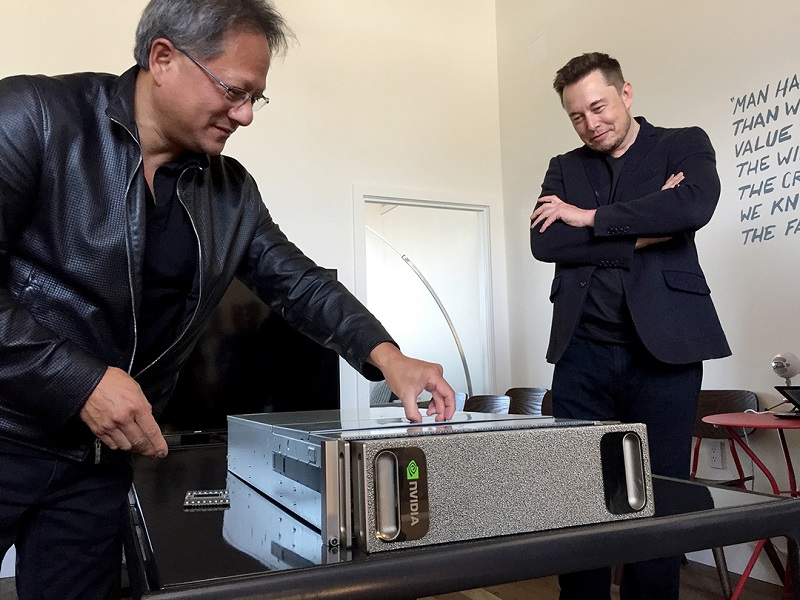
Aug. 15, 2016
By: Michael Feldman
OpenAI, a non-profit research company devoted to advancing artificial intelligence, has become one of the proud owners of a DGX-1, NVIDIA’s so-called “supercomputer in a box,” a server specifically designed for machine learning work. The system, which was hand-delivered to the company’s headquarters in San Francisco by NVIDIA CEO Jen-Hsun Huang, will be used to run some of OpenAI’s most computationally challenging applications.
 NVIDIA CEO Jen-Hsun Huang and OpenAI Co-Founder Elon Musk with DGX-1
NVIDIA CEO Jen-Hsun Huang and OpenAI Co-Founder Elon Musk with DGX-1
More generally, the DGX-1 will be used to support the company’s mission, namely to “advance digital intelligence in the way that is most likely to benefit humanity as a whole, unconstrained by a need to generate financial return.” The non-profit is being backed by Silicon Valley icons like Elon Musk and Peter Theil, and managed to attract more than a $1 billion worth of funding at the time it was founded in December 2015. The company only expects to spend a tiny fraction of that amount over the next few years.
One of main technologies OpenAI is employing to develop more advanced AI is a type of unsupervised learning known as generative modeling. In a nutshell, the technique works by collecting a large amount of data -- images, sounds, text, whatever – which is then used to train a model that can generate data similar it. In that sense, the model has to “understand” the nature of the data, rather than just identify other examples of it.
One of the premier uses cases is creating a digital entity that can hold a conversation with humans. That requires building a model that encapsulates an understanding of how language works and how it’s used to engage people when they talk. Understandably, such a model is hard to train and takes bushels of computing power, which is where the DGX-1 comes in. OpenAI Research Scientist Ilya Sutskever characterized the NVIDIA machine as “a huge advance” and would allow them to explore new sets of problems that could not be attempted before.
The DGX-1 is being offered by NVIDIA as a reference platform of sorts for the Tesla Pascal product, at least until the GPUs become more generally available to OEMs and system integrators. Each server contains eight P100 GPUs, yielding 170 teraflops (half precision, FP16) of number crunching performance. The GPUs are linked together with NVLink, NVIDIA’s custom interconnect that allows the processors to exchange data with each other at super-fast speeds. The DGX-1 lists for $129,000, but it’s not clear if OpenAI paid for the system or came to some other arrangement with NVIDIA.
In either case, the deployment is good PR for GPU maker, which is looking to establish its new Pascal Tesla GPU as the go-to processor for the rapidly expanding machine learning market. But NVIDIA will have to fight off competition from Intel, with its Knights Landing Xeon Phi, as well as from upstarts like Wave Computing, with its DataFlow Processor Unit. With companies like OpenAI pushing the limits in machine learning, the competition is bound to keep heating up.
